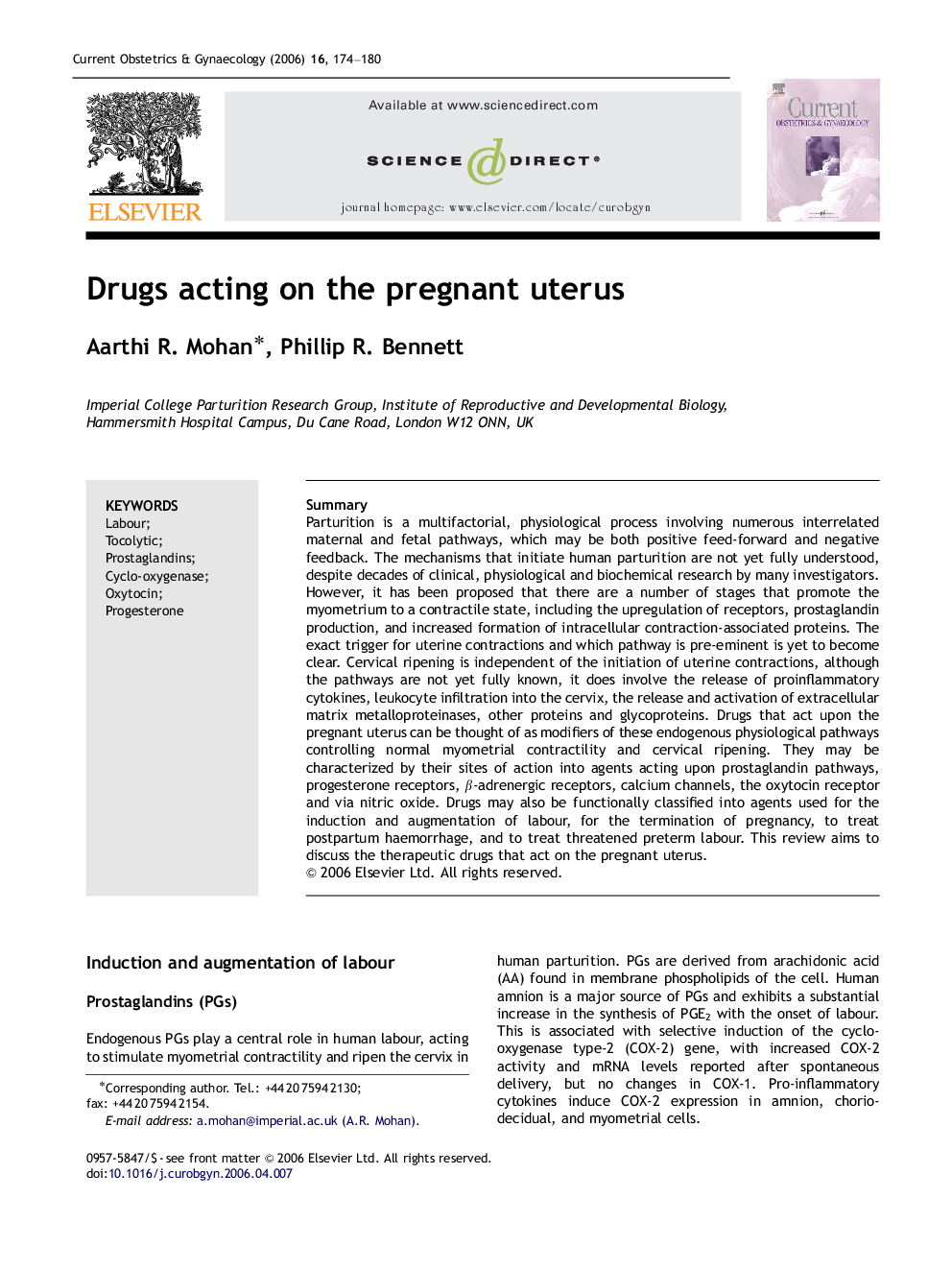| Article ID | Journal | Published Year | Pages | File Type |
|---|---|---|---|---|
| 3916301 | Current Obstetrics & Gynaecology | 2006 | 7 Pages |
SummaryParturition is a multifactorial, physiological process involving numerous interrelated maternal and fetal pathways, which may be both positive feed-forward and negative feedback. The mechanisms that initiate human parturition are not yet fully understood, despite decades of clinical, physiological and biochemical research by many investigators. However, it has been proposed that there are a number of stages that promote the myometrium to a contractile state, including the upregulation of receptors, prostaglandin production, and increased formation of intracellular contraction-associated proteins. The exact trigger for uterine contractions and which pathway is pre-eminent is yet to become clear. Cervical ripening is independent of the initiation of uterine contractions, although the pathways are not yet fully known, it does involve the release of proinflammatory cytokines, leukocyte infiltration into the cervix, the release and activation of extracellular matrix metalloproteinases, other proteins and glycoproteins. Drugs that act upon the pregnant uterus can be thought of as modifiers of these endogenous physiological pathways controlling normal myometrial contractility and cervical ripening. They may be characterized by their sites of action into agents acting upon prostaglandin pathways, progesterone receptors, ββ-adrenergic receptors, calcium channels, the oxytocin receptor and via nitric oxide. Drugs may also be functionally classified into agents used for the induction and augmentation of labour, for the termination of pregnancy, to treat postpartum haemorrhage, and to treat threatened preterm labour. This review aims to discuss the therapeutic drugs that act on the pregnant uterus.
